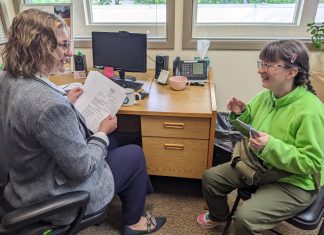Think fraud is an issue only other folks need to worry about? Think again. A recent AARP study shows that we all must take the risk seriously. An estimated nine in 10 Americans—that’s 229 million people—encountered a fraud attempt last year. And 33 million people lost money to a scam in 2020.

Fraud reports skyrocketed during the pandemic, just as technology and business sophistication allowed scammers to cast even wider nets to snare unsuspecting victims. Fortunately, AARP and allies are working hard to keep up with the explosion of scams and schemes—and keep you informed on how to spot and thwart potentially sticky situations.
“Consumer advocates have long struggled to identify exactly who is most likely to become a fraud victim,” says AARP Washington State Director Doug Shadel. “The truth of the matter is that scam artists are master manipulators of emotion, and anyone can experience a scam, regardless of age, income or education. Our research has shown that it isn’t necessarily who you are that matters, but how you are when the pitch is made.”
AARP’s July 2021 report, “A Moment’s Notice,” pinpoints specific environmental and emotional factors that are present in nearly all successful attempts to defraud consumers.

These findings offer a new opportunity to stay a step ahead of the scammers, by helping consumers understand when and how any of us can lose money to fraud, given the right scammer and the right moment in time.
Risk Factors
AARP’s study identified three risk factors that can create vulnerable moments when targets of scammers may be more susceptible to criminal schemes: emotions, environment, and exposure.
Emotions
Victims of fraud reported significantly more and stronger emotions than non-victims at the time of fraud encounters. And more victims than non-victims reported feeling out of control during encounters with scams—which is precisely the goal of the criminal.
Environment
Coping with changes, like loss of a job or death of a family member, may impact a person’s response to fraud. Stressful life events can lower defenses, which may make it harder to spot a scam.
Exposure
Significantly more victims than non-victims experienced multiple exposures to fraud. Many victims also reported being more open to solicitations from strangers and making remote purchases at a pace that significantly exceeded that of non-victims, which may have caused additional fraud exposure.
“The scammer’s goal is to target those vulnerable moments and to get their target into a heightened emotional state so that they’re easier to persuade and control,” says Shadel. “When our emotions take over, we become more susceptible to fraud—it’s not weakness, it’s human. But if we pay special attention and take extra precautions during those moments in our lives, we can gain the upper hand in recognizing and avoiding scammers’ attempts.”
The AARP’s report identifies four key areas that may limit the likelihood of a scam’s success.
- Fraud prevention education should include the role of emotion and stress: Bolster current fraud education efforts that focus on cognitive learnings, by including content that addresses how heightened emotions can weaken our defenses to scams.
- Encourage the use of protective factors that can limit exposure to scams: Encourage the wider use of protective service like call blocking, credit freezes, protective software, online monitoring of accounts, and password management.
- Strengthen social support networks: One of the most important findings of AARP’s study was the role that social isolation and a relative lack of social and family support can play in fraud victimization. The study found victims reported more experiences of loneliness and less social and family support than non-victims.
- Underline the fact that “fraud can happen to anyone:” AARP’s research shows that no one demographic characteristic is the primary source of fraud susceptibility. “An individual can have a PhD in psychology, be a millionaire or a senior partner in a law firm and still lose money to scams,” Shadel says. “If consumers think that older people, uneducated people, low-income people, or some select ‘others’ are the only ones susceptible to fraud, that may give them a false sense of security, which paradoxically can lead to greater susceptibility.”
AARP Fraud Watch Network & Tip-Off Page
Where to start to stay safe from the scammers? A free resource, the AARP Fraud Watch Network equips consumers with up-to-date knowledge to spot and avoid scams. It connects those targeted by scams with AARP’s fraud helpline specialists who provide support and guidance on what to do next. Anyone can call the helpline at 877-908-3360. The Fraud Watch Network also offers free, facilitated peer discussion groups that seek to provide emotional support for those experiencing fraud; and advocates at the federal, state, and local levels to enact policy changes that protect consumers and enforce laws.
Visit AARP’s Tip-Offs page to learn how to spot a con before they spot you. The page also keeps a regularly updated list of the top five robocalls scams taking place in Bellingham, including audio samples of scam phone calls.







































